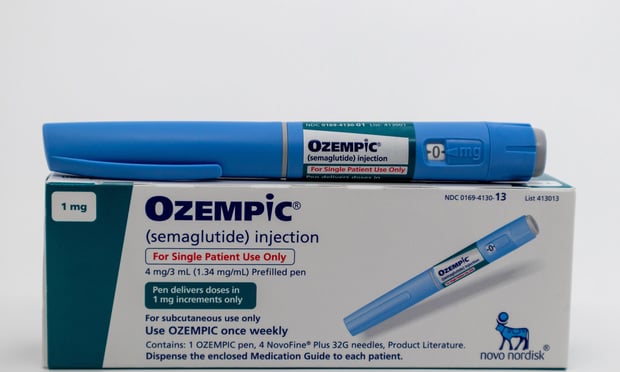Throughout my career, I’ve had the good fortune to work for a variety of industry leading organizations from stratospheric startup Tesla Motors to Fortune 100s Safeway and Washington Mutual.
Related: 5 innovative employee benefits solutions
I planted myself knee deep in managing, analyzing, and creating everything related to employee benefits and have learned more than a few finer points along the way.
The common thread across these three companies was a genuine desire and drive to apply innovative, forward-thinking approaches to change and improve the way employee benefits are delivered.
Related: Employee benefits are the new salary
I’ve reflected on my experiences to give you three takeaways that helped these companies make the biggest impact possible with their benefits and employee experience programs.
Innovation isn’t easy
Much has been written about long work hours. Stories abound of people sleeping in their cars or under their desks and subsisting on Top Ramen and frozen vegetables. That might exist for you at some point along the path, but that’s not the type of innovative environment that I’m talking about here. I am talking about an atmosphere that applies a conscious drive for change which can lead to meaningful acceptance of new ideas.
Related: The millennial expectation of health benefits
Whether you’re rethinking the value of the way health insurance is delivered to families or trying to disrupt a 100-year-old automotive industry, mindfully striving for innovation isn’t a cakewalk.
That’s because humans are programmed not to like change, and for many, working through innovation doesn’t come naturally. It takes a laser-focused and cognizant decision to examine the way things are traditionally or typically done. To do that, you’ll need to gather data, build a team, prove a case, influence, iterate, fail, and to achieve success, you’ll need to do all of these things quickly with minimal errors and missteps.
In my experience, it all comes down to the team that you surround yourself with. When hiring or building your team, I always advise to think creatively about your problems and look for passion in those you recruit. More important than having “done it before” is an intense drive to solve problems and an underlying interest in the core subject.
Early in my career at Tesla, an HR manager said to me, “there are three reasons people come to Tesla. Either they are passionate about cars, passionate about the environment, or passionate about their chosen profession. And Tesla is the best place in the world to be for all three of those things.” Notice there is nothing about money, benefits, or perks. That brings me to the second lesson I’ve learned...
Top talent doesn’t care about perks (until you take them away)
Rarely do candidates and their families make the decision to change their lives — in some cases moving across the country or world — because of the benefits and perks you offer.
Attracting top talent is about storytelling. It’s about having a mission and purpose that a person (and his or her family) can identify with through hard work. I have literally witnessed thousands of people join a common mission early on with little more than unlimited cereal and coffee being offered as the perk. And this was in the geographic backyard of arguably the most intense company perk culture on the planet in Silicon Valley. At the end of the day, people want to feel like they are contributing to something bigger than themselves.
Related: Private exchanges help mid-sized businesses attract and retain top talent
Don’t get me wrong, I don’t mean to imply employees don’t care about the benefits offered to them. They must be satisfied knowing that the basics — health, disability, life insurance, and retirement — are covered. But in my experience, top talent doesn’t make the decision to join a company because of free lunches and massages on Wednesdays.
Keeping that in mind, it is extremely important to construct benefits and perks with care and thought. Once implemented, any experienced HR manager will tell you his or her sad tale of trying to take something away that people are accustomed to.
It’s also imperative to align benefits with perks. Trust me, employees notice if either appears alien to the company culture and mission. I learned this lesson at Safeway during a program that linked the amount of premium a person paid for health insurance to their biometric measures like blood pressure and cholesterol. Employees scratched their heads wondering why the company cafeteria featured cheap burgers and sodas in comparison to the healthy (but pricey) salad bar if poor eating habits could potentially equate to higher health insurance premiums. To promote the healthy lunch options, we had to align its costs with the culture we were trying to foster.
Silicon Valley has become legendary for perks and what many of my colleagues across the country consider frivolous and extravagant benefits. While I agree that many of the Valley’s largest and most iconic brands along with many wannabe cool kids are foolishly wasting time, resources, and money on programs that really do not serve any identifiable goal, I will argue that offering smartly aligned, personalized benefits and perks are the wave of the future. And that brings me to my third and final take-away...
Let the people choose
We have a lot of choice in our lives. We choose the items, price points, and brands to put into our carts when shopping at Safeway. Every Tesla purchase is made to order, built to the specific requirements of the buyer. Google organizes information to make it individualized and useful. Amazon provides a personalized online shopping experience. Uber and Airbnb tap into excess individual capacity in existing systems to create value. We all have different needs, priorities, family situations, and interests, so is it so difficult to offer benefits that can be personalized, too?
Related: HR is the 'conscience' of workplace culture
The traditional way of offering limited choice employee benefits and perks for everyone (i.e., group benefits) is outdated and bloated with waste. Upwards of 30 percent of compensation costs are funneled to these traditional benefits and American companies spend over a trillion and a half dollars on these inefficient benefits per year.
And that doesn’t even include any so-called perks. In my own research, most employers are paying anywhere from $7,000 to $25,000 per year for a single traditional benefits package. That’s a huge chunk of change and much of those benefits will never be used by the individual if it doesn’t apply to their situation or they find no personal value in it.
Instead of these antiquated and engorged traditional benefits, smart people are creating systems and methods whereby employees can build personalized benefits packages that meet individual needs and circumstances. Giving people the choice and ability to craft what they need can and will make a real difference in people’s daily lives.
Adoption by forward-leaning employers along with regulatory cooperation will finally result in a system for employee benefits and perks that is modern, flexible, and valued. A system that looks like the rest of our world: personalized.
© 2025 ALM Global, LLC, All Rights Reserved. Request academic re-use from www.copyright.com. All other uses, submit a request to [email protected]. For more information visit Asset & Logo Licensing.







